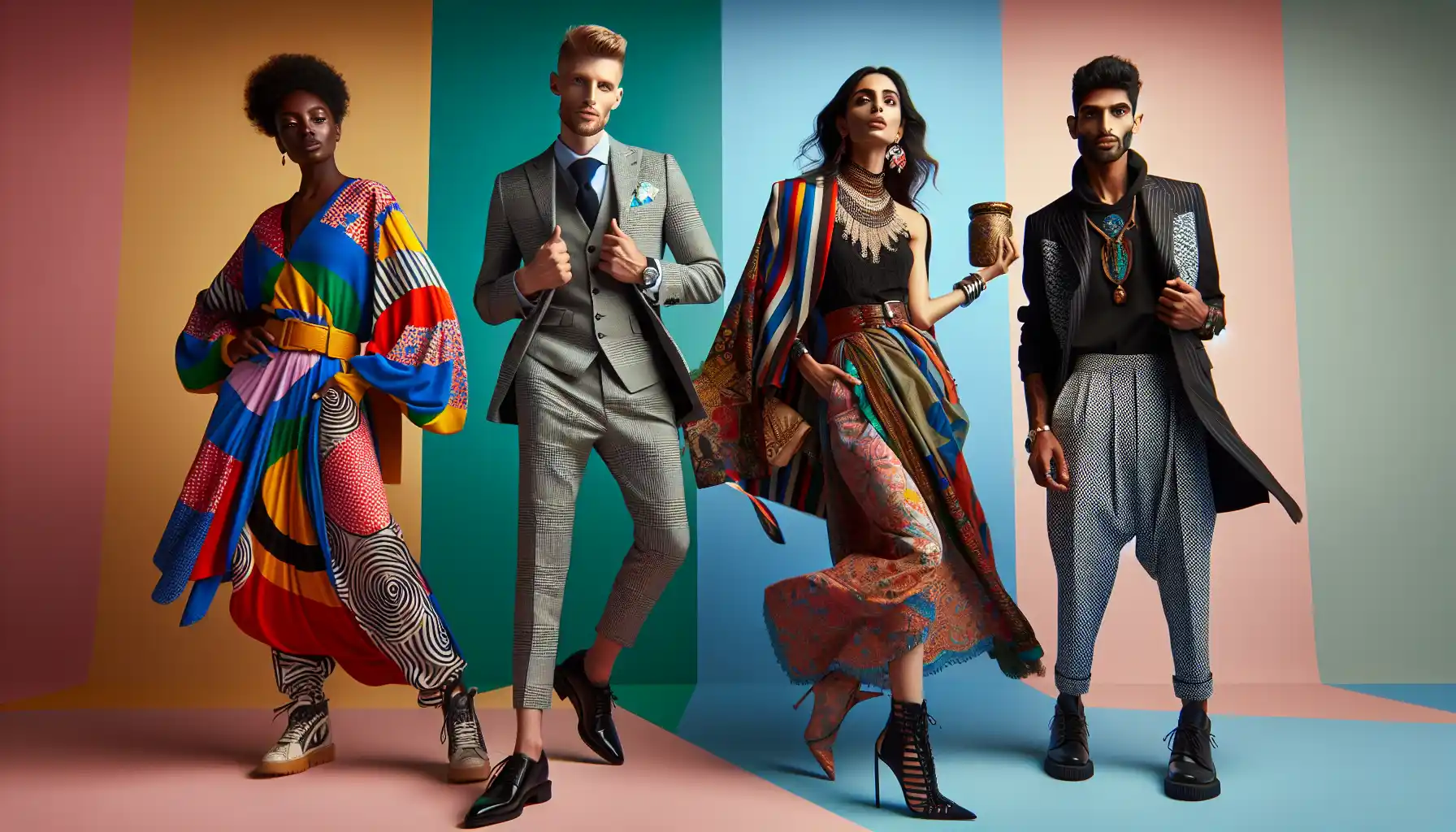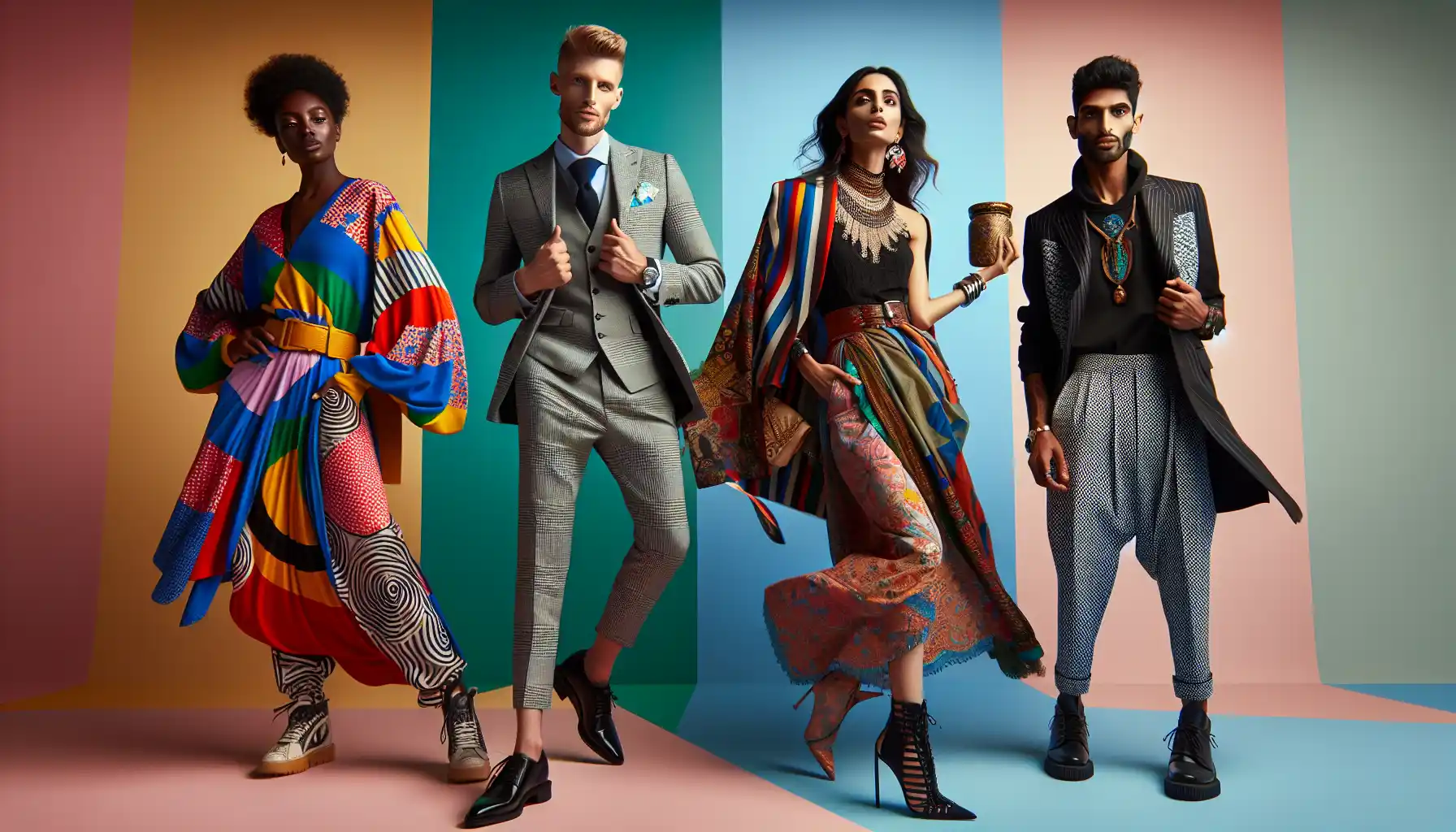In a world where first impressions hold immense weight, one’s choice of clothing serves as a powerful means of self-expression. Fashion not only reflects personal style preferences but also conveys deeper elements of individual and group identities. This article explores the intricate relationship between fashion and identity, shedding light on how clothes have the ability to communicate who we are and where we belong in society.

Exploring the Relationship Between Fashion and Identity
Fashion is not just about clothing; it is a powerful form of self-expression that communicates personal and group identities. Our choice of clothing, accessories, colors, and styles can speak volumes about who we are and what we value. Through fashion, we can convey our personalities, beliefs, cultural backgrounds, and social affiliations.
One way that fashion expresses personal identity is through individual style. Whether you prefer bohemian chic, minimalistic, or trendy looks, your clothing choices reflect your unique personality and tastes. Additionally, fashion allows us to experiment with different personas and identities, trying on new roles through clothing and accessories.
On a broader level, fashion also plays a significant role in shaping group identities. Through shared styles, symbols, and trends, communities can come together and create a sense of belonging. Subcultures, social movements, and cultural groups often use fashion as a means of expressing their shared values and beliefs.
The Influence of Personal Style on Individual Identity
Personal style plays a significant role in shaping individual identity. The way we choose to dress and present ourselves to the world can say a lot about who we are as a person. Fashion is a powerful tool for self-expression, allowing us to convey our personality, values, and beliefs without uttering a single word.
Our clothing choices can also reflect our belonging to certain groups or subcultures. Whether we prefer bohemian, minimalist, or streetwear fashion, our style can help us connect with like-minded individuals and foster a sense of community. Through fashion, we can communicate our affiliations and form bonds with others who share similar tastes.
Furthermore, personal style can impact how we perceive ourselves and how others perceive us. The clothes we wear can affect our confidence levels and even our behavior. When we feel good in what we’re wearing, we exude a sense of self-assuredness that can positively influence our interactions with others.
How Fashion Choices Reflect Cultural and Subcultural Identities
When we think about fashion, we often focus on the latest trends and styles. However, what many people fail to realize is that the clothes we choose to wear can say a lot about who we are as individuals and the groups we belong to. Fashion plays a vital role in expressing cultural and subcultural identities, communicating messages about our personal values, beliefs, and lifestyles.
One way in which fashion reflects cultural identities is through traditional clothing. Many cultures have unique garments and accessories that are specific to their heritage and history. These traditional pieces often signify a sense of pride and connection to one’s roots. For example, the kimono in Japan is not just a piece of clothing, but a symbol of Japanese culture and tradition.
On the other hand, subcultures use fashion as a way to differentiate themselves from the mainstream society and express their alternative ideologies. Subcultural groups like punks or goths have distinct styles that set them apart from the rest of society. Their clothing choices reflect their rebellious nature and non-conformist attitudes. Through fashion, subcultural groups can establish a sense of belonging and solidarity with like-minded individuals.
Tips for Using Clothing to Express Your Unique Identity
Fashion is a powerful tool for expressing who you are and what you believe in. Your clothing choices can communicate your unique identity to the world, allowing you to showcase your personality and values. Whether you’re a trendsetter, a minimalist, or a vintage lover, your style reflects your individuality and helps you stand out from the crowd.
Here are some :
- Dress for your mood: Use clothing to reflect how you’re feeling on any given day. Whether you’re feeling bold and confident or laid-back and relaxed, choose outfits that match your mood.
- Experiment with different styles: Don’t be afraid to mix and match different fashion trends to create a look that is uniquely yours. Try incorporating elements from various styles to create a signature look that suits you.
- Showcase your interests: Use clothing to showcase your interests and passions. Whether you’re a music lover, a sports enthusiast, or an art aficionado, incorporate elements of your hobbies into your outfits to make a statement about who you are.
As we’ve explored in this article, fashion is so much more than just what we wear – it’s a powerful form of self-expression and a way to communicate our personal and group identities to the world. Whether we’re consciously choosing our outfits to reflect our individual style or unconsciously signaling our belonging to a certain social group, our clothing choices say a lot about who we are and where we fit in. So the next time you’re getting dressed, take a moment to consider the message you want to convey to the world through your clothes. Because in the end, fashion isn’t just about following trends – it’s about embracing and celebrating the unique identities that make us who we are.

